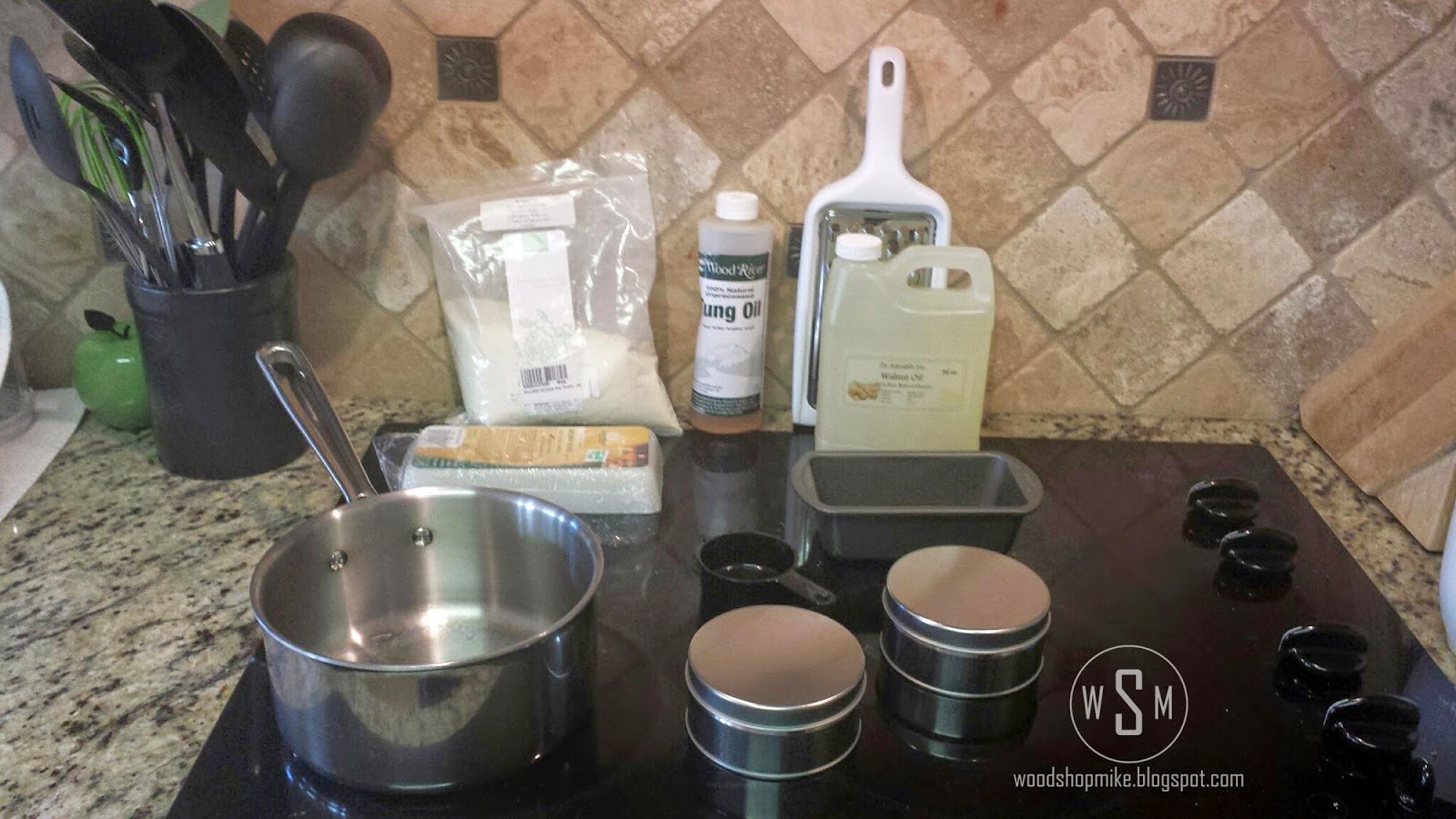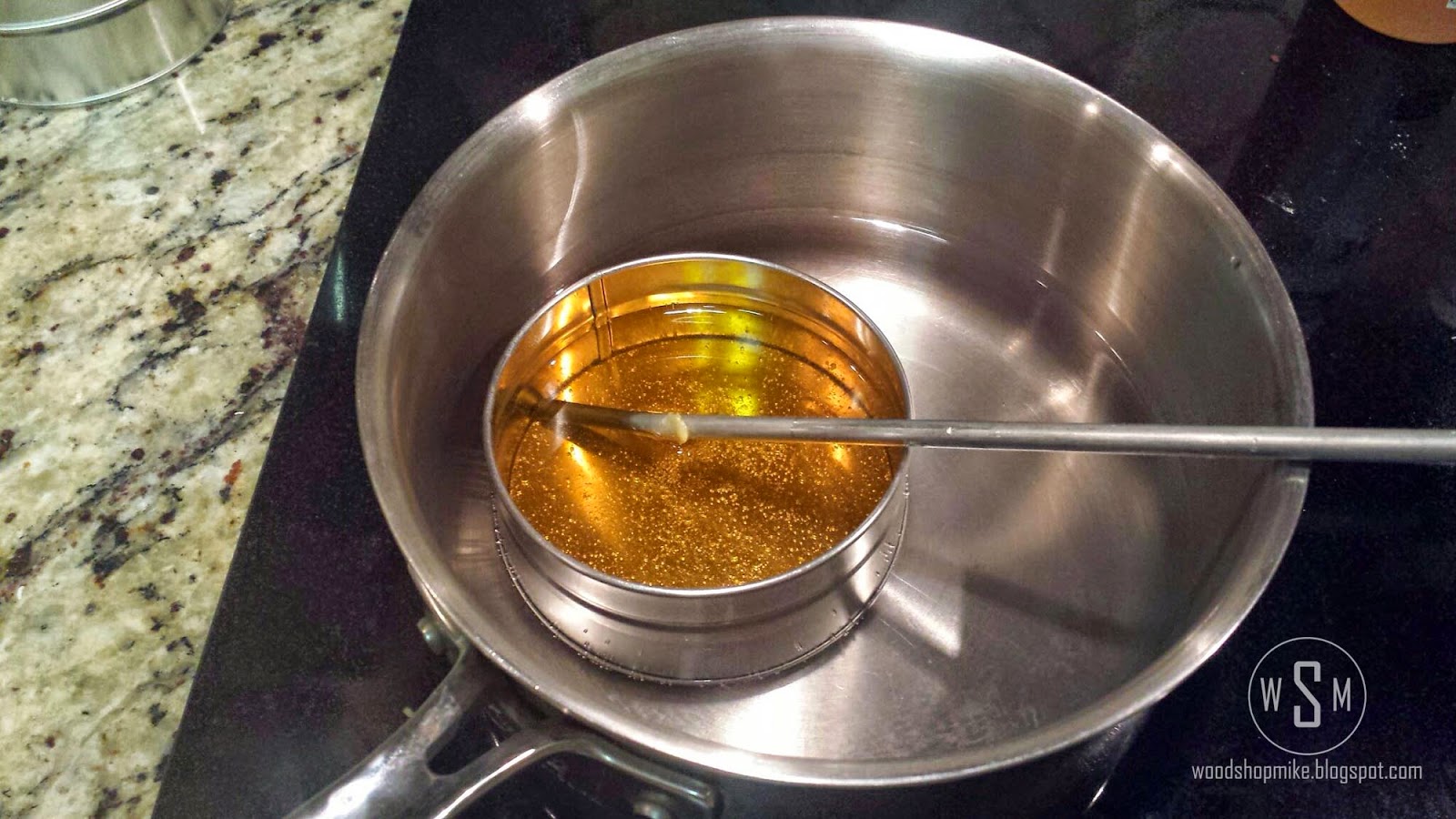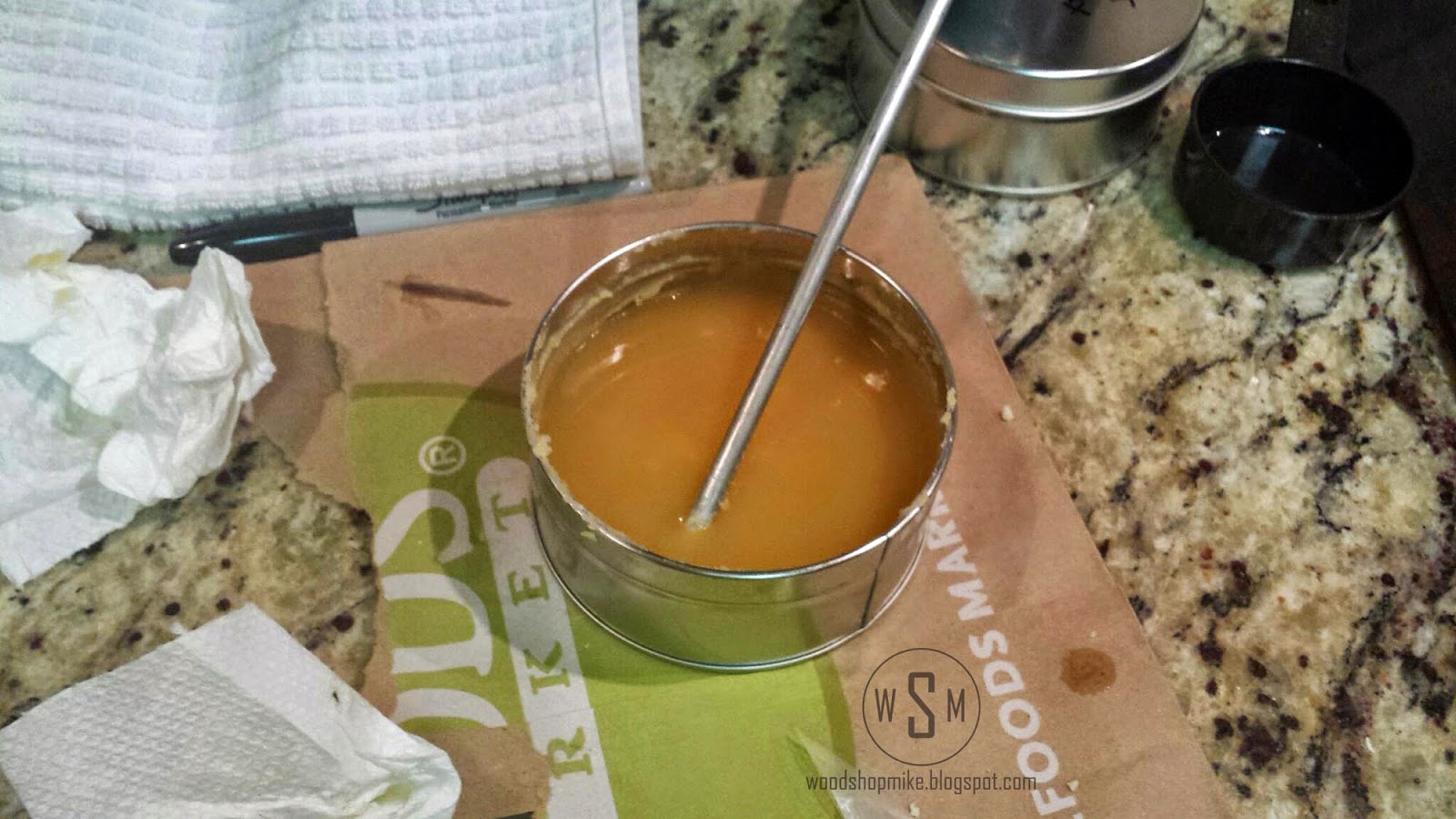

So heres the catch, you married men should first request clearance to the kitchen. Well be melting wax in a double boiler on her stove top. Godspeed.
Assuming you have permission to use the kitchen (I dont want any messages from angry wives, they scare me) you will need a few items.
- A pot to boil water in (can be one of her pots as long as you have permission)
- A metal container in which to blend your melted wax and oil (I used the same container for storage)
- A heavy duty grater (seriously, dont use the cheese grater you got as a wedding present)
- Bees Wax
- Carnuba Wax
- Tung Oil / Walnut Oil
- 1/3 cup measuring cup
- The most important item! Pliers or vise grips to remove the mixture with.
- Something to stir with. Non melty is a plus!

- 1/3 cup Bees Wax
- 1/3 cup Carnuba Wax
- 1 cup Walnut or Tung Oil
This makes a wax that is easy to apply and buff out. Changing the ratio of Bees wax to Carnuba wax will change characteristics of your finish. Carnuba wax is very hard and brings out great luster to a piece. Bees wax can also give a nice shine, but will dull more quickly than Carnuba wax.
So why use Bees wax at all? Well, its much cheaper and is more malleable. If you had a paste wax that was just made up of Carnuba wax and oil, it would be a crumbly mess. Aside from that, I dont want my cutting board to shine like a new Lamborghini after treating it with paste wax. This is the main reason for using a blend instead of just one wax. By altering the recipe, you can control the sheen and durability of a paste wax finish.
Enough of the wordy stuff, let get on with it already.
Before you start melting wax, add enough water to the pot so that the water level is about 1/2" below the top of your melting container.
Add the wax and oil to your container and turn up the heat. You can go ahead and crank it up, but be sure to turn the heat down before the water starts to boil. You dont really want water in your paste wax, so try to avoid it. A little wont cause any major trouble, but just be mindful that the less water in your paste wax, the better.

Once everything is melted, you can take the container out of the pot of water with pliers. The stuff is kinda hot... Spilling is not recommended.

As the wax cools, keep stirring the mixture so that the oil does not separate. Putting the container on a cooling rack helps to speed up the cool down process. Ive also put the container in the fridge for about a minute at a time when the mixture is fresh out of the hot water.

Before you start melting wax, add enough water to the pot so that the water level is about 1/2" below the top of your melting container.
Add the wax and oil to your container and turn up the heat. You can go ahead and crank it up, but be sure to turn the heat down before the water starts to boil. You dont really want water in your paste wax, so try to avoid it. A little wont cause any major trouble, but just be mindful that the less water in your paste wax, the better.

Once everything is melted, you can take the container out of the pot of water with pliers. The stuff is kinda hot... Spilling is not recommended.

As the wax cools, keep stirring the mixture so that the oil does not separate. Putting the container on a cooling rack helps to speed up the cool down process. Ive also put the container in the fridge for about a minute at a time when the mixture is fresh out of the hot water.

Once the wax is cooled, its ready to use. Be sure to write down your recipe so that you can repeat it once you run out, or so you have a starting place for changing up your paste wax recipe in the future.
This is a basic recipe and you can certainly add colorants or metallic flakes to the wax for a different effect.
I hope you enjoyed the post. Let me know if you try it out for yourself and feel free to comment or ask any question you may have. Thank for reading, yall!







0 komentar:
Posting Komentar